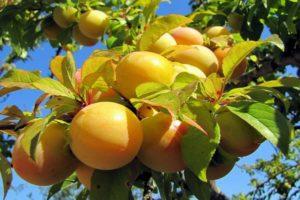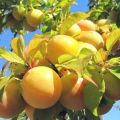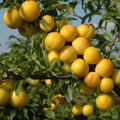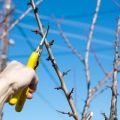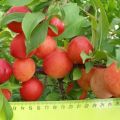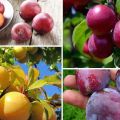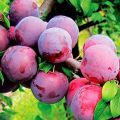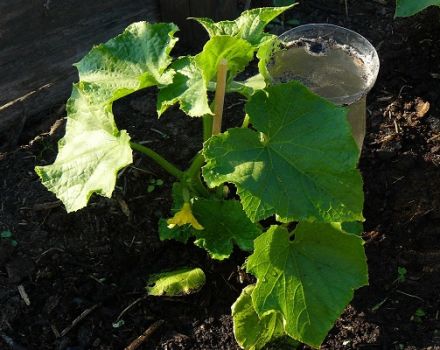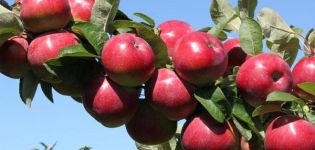Description and characteristics of plum varieties Morning, growing and care
Plum of the Morning variety is a fast-ripening species that gives sweet and aromatic fruits of a yellow sunny color. If the gardener takes proper care of the trees of this variety, then after four years he reaps a rich harvest of delicious plums. So how do you care for plum trees?
General information about the variety
This variety was bred by three gardeners scientists Kh. K. Enikeev, VS Simonov and SN Satarova. They crossed the Renclode Ullens variety and the Red Precocious. Plum tree Morning lives for about 21 years. It gives its first harvest four years after planting.
The height of the tree reaches an average of 3.5 meters. The fruits are yellow-green in color, and on the side where the sun's rays fell, the fruit has a slightly pinkish tint.
This variety blooms from mid to late May. The fruits are ready for harvest in the tenth of August. The Morning plum can be described as a juicy, moderately sweet fruit. It is recommended to grow this variety in the central part of Russia.
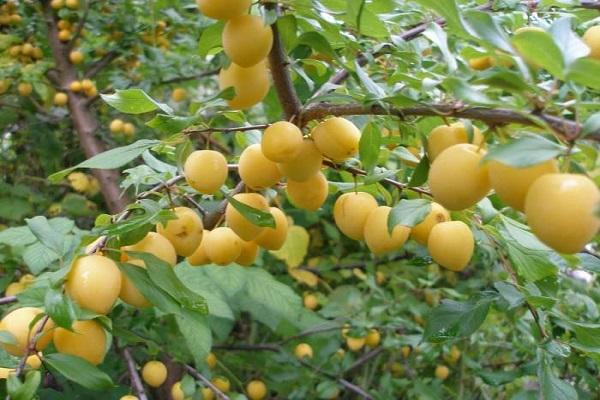
Disease and pest resistance
The Morning variety, in principle, is considered quite resistant to various diseases and pests, but there are also weak points:
- Scab is a fungal disease in which the leaves are deformed and plum fruits deteriorate. To prevent such a disease, it is enough to spray the trees with one percent Bordeaux liquid. If the disease is already present, treatment should be done after harvest.
- Another type of fungus is moniliosis or fruit rot. It is enough to clean up the garbage in time, collect spoiled fruits from and around the tree and feed the soil in time with fertilizers containing potassium and phosphorus, and this disease will never disturb. If this fungus is present, the plant must be treated during flowering.
- Are there orange spots on the sheets that begin to grow and turn redder? This is another type of fungal infection - red spot. For prevention, spray with a solution of copper sulfate (1%). Various solutions are used to treat the plant after plum blossom.
- The plum mite is capable of destroying more than half of the crop. The tree begins to wither and eventually dies. The only measure to protect the plum is to plant it away from almonds, peaches and other fruits that are also affected by this mite.
- Plum sawfly.To prevent the appearance of such a pest, it is necessary to dig up the ground under the trunk in the fall, and in the spring, before flowering, carry out treatment with special preparations.
Yield
The yield of this variety is from fifteen to thirty kilograms from one tree. A decrease in volumes occurs only once every four years, because it rests with such an interval of discharge. The first crop after planting is usually obtained from the fourth to the sixth year of life. On the 21st year from the moment of planting, the plum ceases to bear fruit.
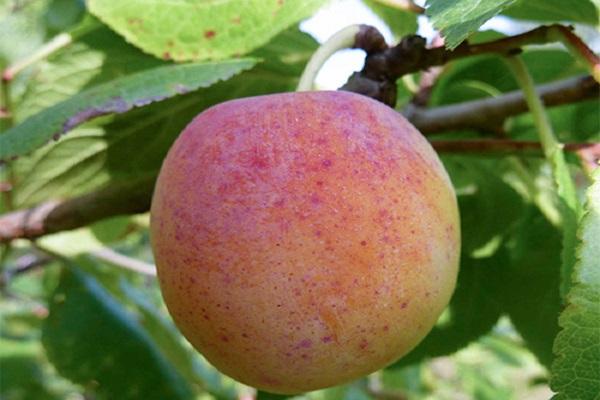
Frost resistance
The main disadvantage is its high sensitivity to winter frosts, the plum suffers greatly from this, therefore, in places where the winter conditions are harsh, it is not grown.
But it is worth noting that the Morning plum variety recovers quickly enough. With the onset of cold weather in spring, the plum does not suffer from this.
Drought tolerance
Watering should be done regularly, otherwise the fruits from a lack of moisture will fall ahead of schedule, and therefore the yield will decrease.
Pollination
Morning is completely self-fertile. No additional pollinators are needed. Interestingly, such a plum perfectly increases the yield of neighboring trees, thereby being a pollinator itself.
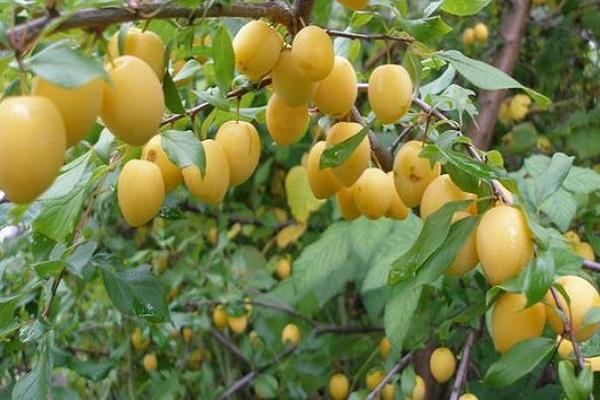
Positive and negative sides of plum Morning
Advantages:
- High and stable yield level.
- The type of plum promotes a quick sale.
- Sufficiently high resistance to parasites and diseases.
- Sweet fruits.
- Does not require pollination.
Disadvantages:
- The only important disadvantage is that it does not tolerate winter cold.
The subtleties of growing a tree
It is important to follow all recommendations for planting a crop.
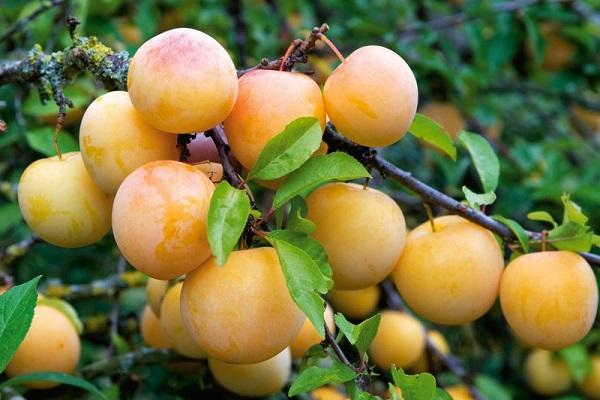
Timing and seat selection
In terms of disembarkation, everything is simple:
- A seedling with a closed root system is recommended to be planted in the spring or in the first two months of the fall season.
- In the case when the roots are open, planting should be carried out in the spring, before bud break.
When choosing a place, you should pay attention to the soil. It should be loose enough and not hard like stone.
The place should be:
- not shady, but well accessible to sunlight;
- windless;
- on a flat surface so that moisture does not accumulate in large quantities.
When the conditions are met, the harvest will be rich and large.
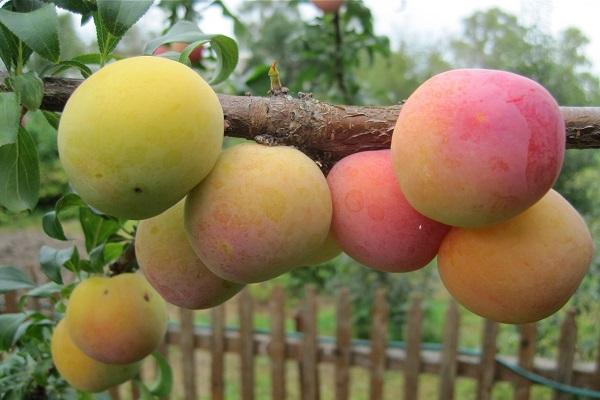
The process and scheme of planting seedlings
Landing is recommended in spring. The pit and soil for the seedling should be prepared in the fall. If this is not possible, you should wait about 20 days between preparing the hole and planting the seedling.
If the ground is very wet, you need to raise the hole by half a meter, and more is possible. The hole should be 60 by 60 cm in size.
If the soil contains a lot of sand or clay, fertilize it with nutrients. For acidic soil, add lime. In the first 20 cm of the excavated earth, humus, potassium, ash from the wood are added, then this mixture is added back to the hole, filling it by 2/3.
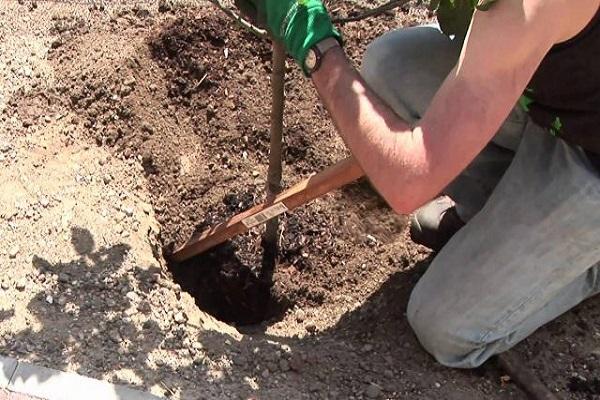
It is better to buy a seedling from one to two years old without visible damage to the trunk and rhizome. It is more favorable to plant a seedling with closed roots, so it gets less stress, and this can be done in autumn and spring. If the roots are open, then they are immersed in water for up to a day before planting in the soil.
Next steps:
- Further, a piece of wood is driven into the prepared hole from the south, which will support the young tree and protect it from burns.
- Then the seedling is placed. The root system must be evenly distributed in the soil.
- The roots are carefully covered with earth, which must be tamped so that there are no air voids.
- Small sides are made around the trunk for convenient watering.
- The seedling is tied to a piece of wood only with a soft cloth.
- Water abundantly. When the water is absorbed, add compost on top.

Nuances of culture care
If planting was carried out in the fall, leaving is postponed until spring. A spring sapling needs extra care.
Regularity of watering
Water the tree weekly in sufficient quantity. If there have been heavy rains, it is better to postpone irrigation to avoid root rot. Cold water cannot be watered, only warmed in the sun.
In a mature tree, the amount of moisture is reduced. In any case, regardless of the age of the tree, you must not allow the soil to dry out. If the soil is too damp or there is not absorbed water near the tree, watering should be abandoned. After irrigation, sawdust or freshly cut grass is added from above.
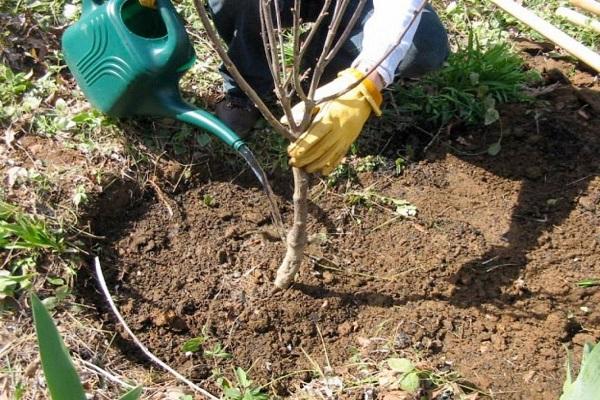
Fertilization
Top dressing is good, but in moderation. When using various fertilizers in the planting process for the next two years, nothing more needs to be added.
After two years, fertilization should be regular:
- During flowering, fertilizing with urea and potassium is added about 40 g.
- When fruits appear, 30 grams each add urea and nitrophosphate.
- After harvesting the fruits, it is better to fertilize the tree with potassium and superphosphate.
Before winter, it is better to season the fruit tree with organic fertilizers. The most common among them is manure. It is good to add wood ash and superphosphate there.
Pruning rules
When planting a young seedling, the top is cut off. And young trees are pruned to form a crown in spring and winter.

You need to remove the branches with a sharp knife or saw. Places of cuts are treated with garden solution. When pruning, a round crown should be formed. This removes branches damaged after wintering, that is, frostbitten or broken.
Stumps after the cut should not remain. The shoots near the roots need to be removed all summer so that it does not take away nutrients from the tree. Branches growing inward and upward are cut.
Plum wintering
The young plant is covered with warm material, and the trunk must be protected with a net from rodents. Considering that Morning plum does not tolerate frosts well, trees at any age must be carefully wrapped in warm material. And from young trees, excess snow should be shaken off to avoid branch breakage.
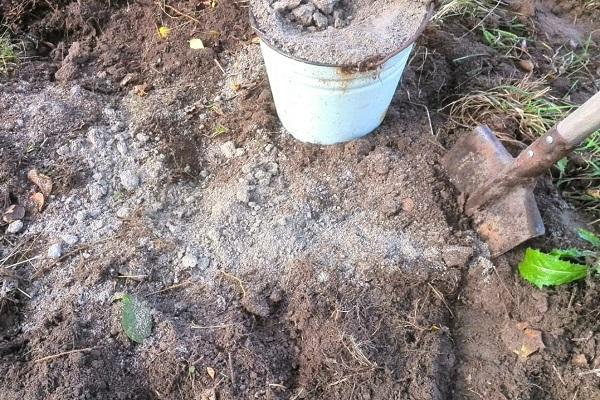
How to protect a plant from diseases and pests
Despite the fact that the Morning variety is resistant to parasites and disease, the plant can still get sick.
Preventive measures:
- Digging the earth around the trunk.
- Removal of affected branches and fruits.
- Timely processing of trees
More details on drugs for treatment are written above.
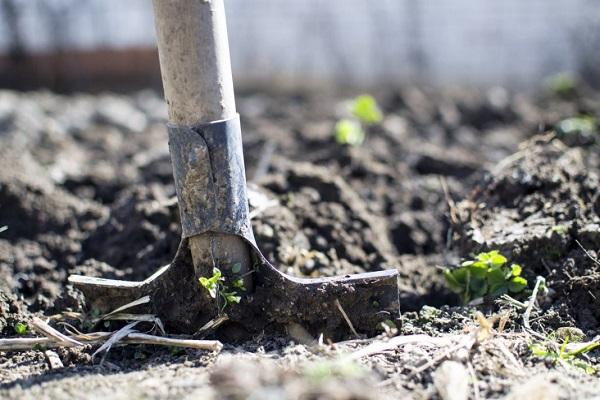
Harvesting and storage rules
Fruits on the top should be removed with a ladder. It is impossible to bend the branches in order to avoid breaks and cracks of the shoots.
Harvesting by shaking the tree is not recommended. This will lead to the formation of cracks on ripe fruits, due to which they will lose their presentation and deteriorate faster.
If plums are supposed to be used immediately for food or processed into jam or jam, ripe fruits must be picked. If the plums are planned to be transported, then pick unripe fruits. But such fruits are stored in the refrigerator for two weeks, after which the sweetness is lost, and the plum will become soft.
